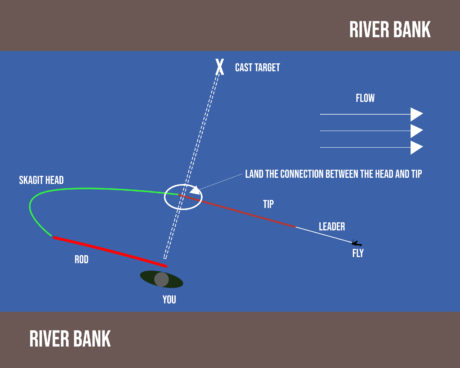The Double Spey cast is a nice, fluid, and fundamental Spey casting technique. It is also one of the most popular casts in the Spey cast arsenal. Here are a few tips to help with correct anchor placement and effectively loading the rod.
Tip 1: Place the connection between the head and the tip in front of you. – While performing your anchor set, when you lay your line down in the water, make sure the connection between your head and your tip is perpendicular to your body, and your casting point.

Tip 2: Wait a hot second before you start your sweep – After you’ve completed your anchor set, make sure to pause. If you struggle with this, trying counting 1001, 1002, 1003. You want to give your line time to set in the water and get a good grip, before starting your sweep. This gives the rod a solid preload going into the transition of the D loop.
Tip 3: Don’t dip your rod – In what seems to be the number one mistake on a lot of Spey casts, don’t dip your rod while performing your sweep. Dipping the rod tip on the transition from sweep to d-loop is a common habit for a lot of people. I encourage you to have someone watch you while you perform this stroke, as many of us do it, without realizing it.
When I come around to form my D loop is it a smooth little effort move of the rod, or is there an excelerated (sp?)
kick of the rod to drive the loop farther back forming the “V” for better performance? Is the worry then throwing the line too far towards your other shoulder?
For an airborne cast such as single spey, the slight dip serves to help lift additional line off the water and set the anchor back down to the water in an appropriate location.
For waterborne casts such as the double spey, after the anchor has been set either the slow incline swing around and up to the key position or the lift and swing (ala “martini glass” as discussed by Tom Larimer) are the key for these waterborne casts where again the anchor has been set. In these cases of the waterborne casts, the “dip” serves to provide slack which reduces the load and “forces” the caster to add more power on the forward stroke and sometimes a resulting tailing loop.